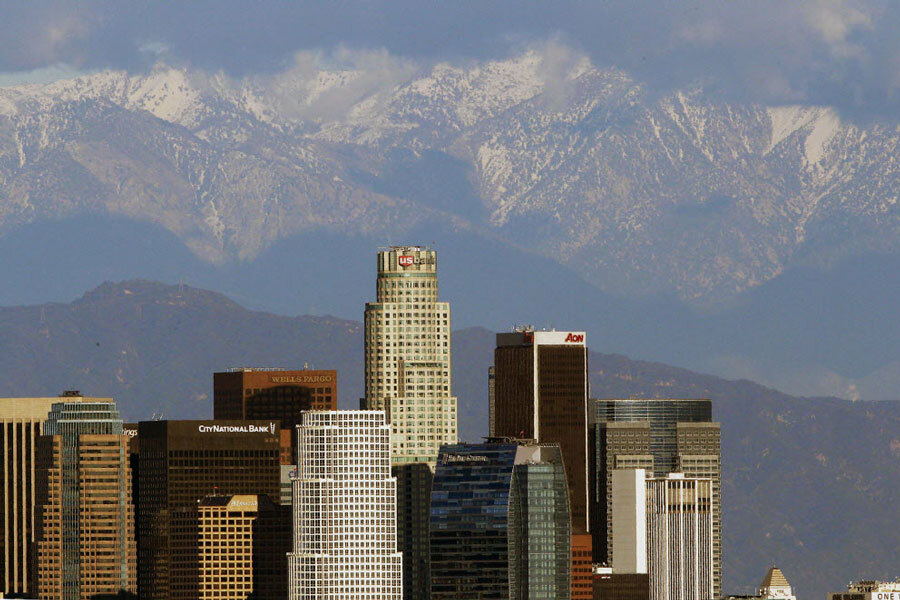Obama designates San Gabriel Mountains national monument: Why it took 11 years
Loading...
President Obama planned to cite the 1906 Antiquities Act for the 13th time of his presidency on Friday in order to help Angeleno city kids use 540 square miles of national forest where the San Gabriel range spills into Los Angeles.
The designation is drawing ire on a number of fronts, including that turning the area into a national monument could hurt local businesses, might affect sensitive flood control systems, and may complicate a plan to run a high-speed train through the San Gabriels.
Proponents, however, say the designation is critical in order to funnel more federal resources to repair and clean up decrepit and graffiti-tagged infrastructure.
The designation will protect existing uses of the land, but it limits activities such as mining and road-building while placing extra protections on historically significant objects within the monument.
Fifteen million people live within a 15-minute drive of the area, and about 3.5 million people a year already visit the wrinkled hillsides for activities like canyoneering. The San Gabriel River is a well-known spot for Angelenos to escape the city and cool off in creeks.
Obama’s decision comes 11 years after California lawmakers first tried to get federal help to shore up the area as a protected public resource that would be off limits to logging and mineral speculators. The latest legislative effort, by Rep. Judy Chu, (D) of California, became bogged down in partisan Washington politics, as have a number of other wilderness bills.
Complicating the decision by Obama is that the move touched on a long-running complaint about the Antiquities Act of 1906, which is that it tramples on the deliberative rights of Congress and penalizes states that don’t like being told how its resources can be used.
Indeed, while Los Angeles Mayor Eric Garcetti applauded the decision, the Angeles County supervisor, Michael Antonovich, grumbled that the proclamation is “ill-advised” because it ignores local stakeholders. Nearby San Bernardino County, which ropes in part of the range, was left out of the designation altogether because local officials had so steadfastly opposed it.
“We now have more questions than answers” about the designation’s impact on roads, water resources, and fire-prevention capabilities, Mr. Antonovich said in a statement.
The area is already part of the Angeles National Forest, but national forests have far fewer resources available than monuments, which is why the Forest Service has been unable to keep up with maintenance, struggling to keep even trailhead restrooms in working order.
Local volunteers last year removed nine tons of trash, 2,182 graffiti tags, and 161 illegal fire rings from the area, according to the Los Angeles Times. With few rangers on patrol, visitors regularly break rules by barbecuing in the middle of rivers and pitching tents along trails.
Under Obama’s plan, the US Forest Service will put $1 million toward removing graffiti and fixing bathrooms, and will hire extra educational staff. Local nonprofits have thrown in $3.5 million to help with stewardship of the monument.
While Obama has had to defend his own expansive use of executive powers on issues ranging from immigration to recess appointments, he’s far from alone in being criticized for bypassing Congress and the states to wall off federal lands.
FDR fought Congress for years over his designation of Jackson Hole, Wyo., as a national monument, and President Bill Clinton angered residents of Utah when he created the Grand Staircase-Escalante National Monument, which blocked mining on one of the country’s largest coal reserves.
Like other modern presidents, Obama hasn’t been coy in using his power to protect historically sensitive places. Among others, he has created the Cesar E. Chavez National Monument in California and the Charles Young Buffalo Soldiers National Monument in Ohio.
Before him, President George W. Bush created the African Burial Ground National Monument in lower Manhattan, as well as the Papahānaumokuākea Marine National Monument in Hawaii, which is larger than all national parks combined.








